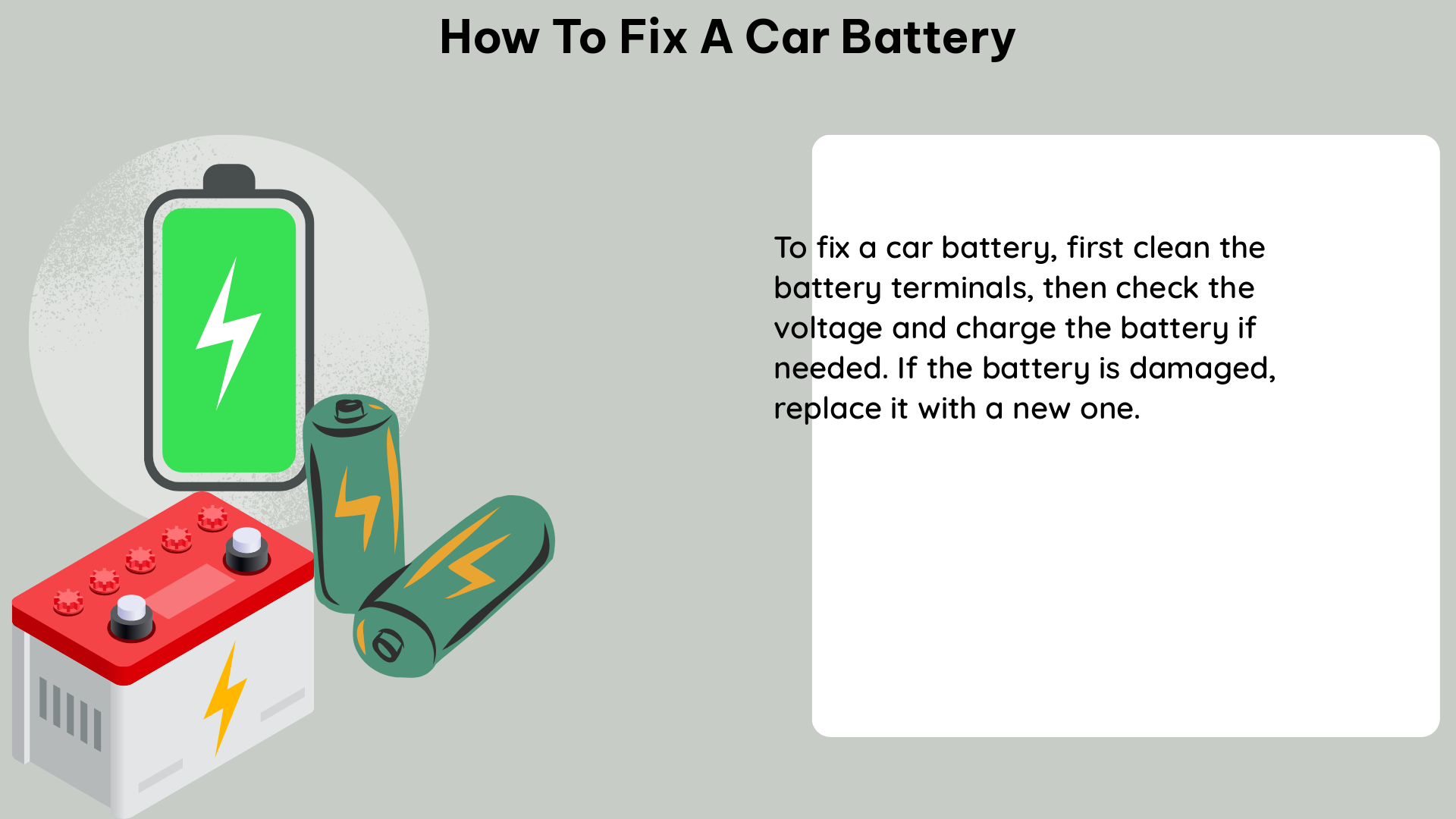Fixing a car battery can be a daunting task, but with the right knowledge and tools, it can be a straightforward process. This comprehensive guide will walk you through the steps to diagnose, repair, and maintain your car’s battery, ensuring it stays in top condition for years to come.
Checking the Battery Voltage
The first step in fixing a car battery is to check its voltage using a voltmeter. If the voltage is below 11 volts, the battery will need to be charged for a week or more using a solar panel or other charging method. The voltage should eventually rise to around 13 volts and then to 15-16 volts, at which point it should be kept at that voltage for 2-3 days. During this time, the hydrometer should turn green, indicating that the battery is fully charged.
It’s important to note that the voltage of a car battery can vary depending on the age, condition, and usage of the battery. A healthy car battery should have a voltage between 12.6 and 12.8 volts when the engine is off and the battery is at rest. If the voltage is significantly lower than this, it may indicate a problem with the battery or the charging system.
Addressing Acid Stratification

Acid stratification can be a common issue with car batteries, particularly in batteries that are not fully charged or that have shallow discharges. This occurs when the sulfuric acid in the battery becomes unevenly distributed, with the denser acid settling at the bottom of the battery.
To address acid stratification, you can try the following steps:
- Allow the battery to rest for a few days to allow the acid to mix naturally.
- Apply an equalizing charge to the battery, which involves charging the battery at a higher voltage (typically around 15.5 volts) for a few hours to help mix the acid.
- Shake the battery gently to help mix the electrolyte.
It’s important to note that these steps should be performed with caution, as overcharging or excessive shaking can damage the battery.
Charging the Battery with a Solar Panel
If the battery has been left to rot and has odd voltages that prevent a charger from charging it properly, a solar panel can be used to charge the battery without a regulator.
When using a solar panel to charge a car battery, it’s important to choose the right size panel. A 40-watt solar panel is generally recommended for charging a car battery, as a panel that is too large can generate heat and cause damage to the battery.
The charging process using a solar panel can take a week to 10 days in the summer or a couple of weeks in the winter, depending on the climate and the condition of the battery.
Equalizing the Charge
Equalizing the charge is an important step in maintaining a car battery’s health. This process involves charging the battery at a higher voltage (typically around 15.5 volts) for a few hours to help mix the electrolyte and ensure that all the cells are fully charged.
To perform an equalizing charge, you’ll need a battery charger that has an “equalize” or “boost” setting. Follow the manufacturer’s instructions for your specific charger, and be sure to monitor the battery closely during the charging process to avoid overcharging.
Avoiding Common Mistakes
When fixing a car battery, it’s important to avoid common mistakes that can damage the battery or the charging system. Some things to watch out for include:
- Overcharging the battery: If the voltage stays high or the battery gets too hot, it may be a sign that the battery is being overcharged.
- Undercharging the battery: If the voltage stays low, it may be a sign that the battery is not being charged properly.
- Mixing old and new batteries: Mixing batteries of different ages or types can lead to imbalances and premature failure.
- Neglecting maintenance: Regular cleaning, inspection, and maintenance of the battery and its connections are essential for keeping it in good condition.
By following these steps and avoiding common mistakes, you can effectively fix and maintain your car’s battery, ensuring it provides reliable power for years to come.
Reference:
- Restoring Automotive Batteries
- Automotive Battery Maintenance and Repair
- How to Revive a Dead Car Battery

The lambdageeks.com Core SME Team is a group of experienced subject matter experts from diverse scientific and technical fields including Physics, Chemistry, Technology,Electronics & Electrical Engineering, Automotive, Mechanical Engineering. Our team collaborates to create high-quality, well-researched articles on a wide range of science and technology topics for the lambdageeks.com website.
All Our Senior SME are having more than 7 Years of experience in the respective fields . They are either Working Industry Professionals or assocaited With different Universities. Refer Our Authors Page to get to know About our Core SMEs.